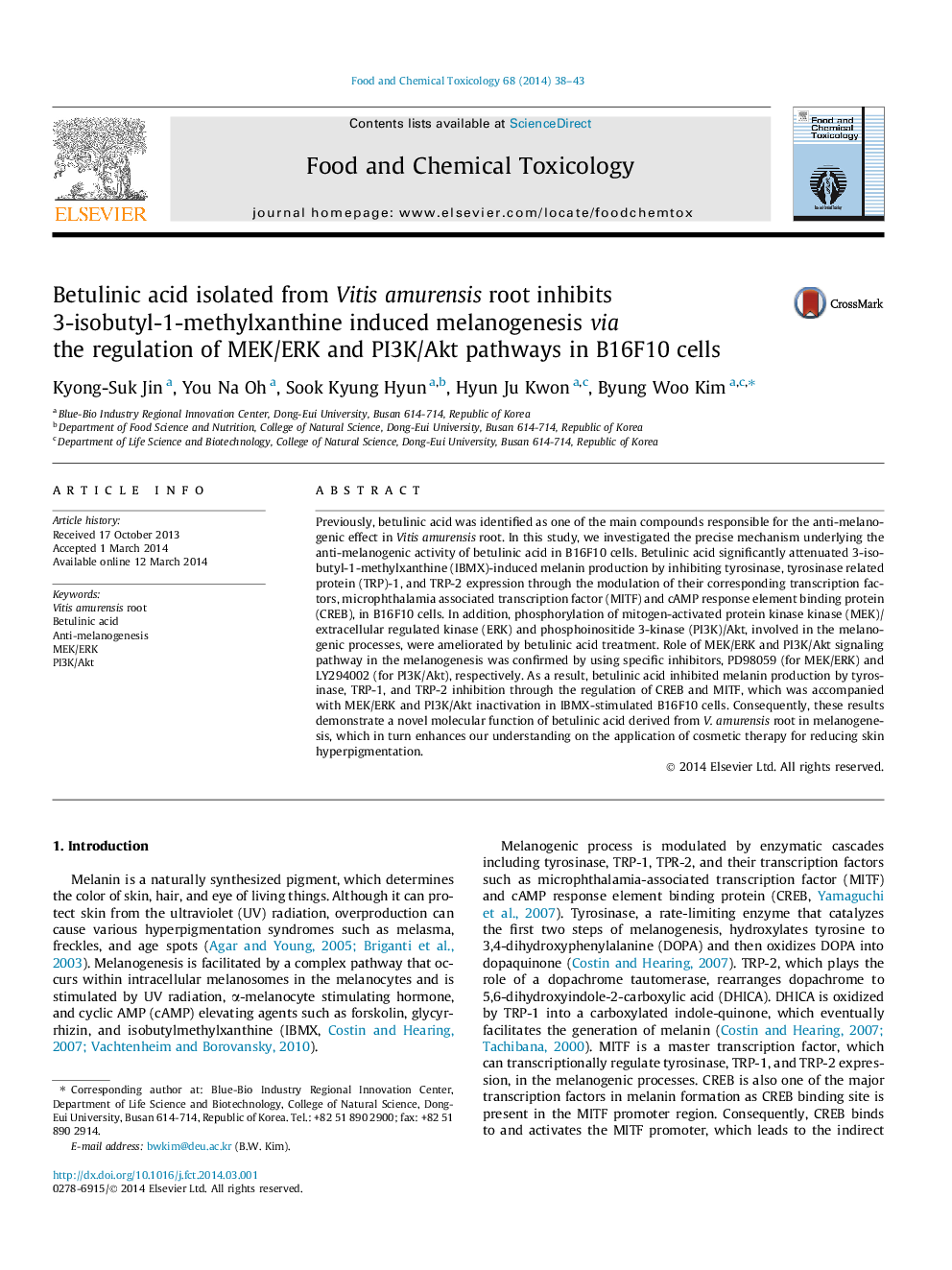| Article ID | Journal | Published Year | Pages | File Type |
|---|---|---|---|---|
| 5850493 | Food and Chemical Toxicology | 2014 | 6 Pages |
â¢In this study, anti-melanogenic activity of betulinic acid originated from the root of V. amurensis was evaluated.â¢Betulinic acid significantly suppressed IBMX induced melanogenesis in a dose-dependent manner in B16F10 cells.â¢Betulinic acid inhibited tyrosinase, TRP-1, and TRP-2 expression through the regulation of MITF and CREB.â¢Anti-melanogenic process by betulinic acid might be accompanied with MEK/ERK and PI3K/Akt signaling pathways.
Previously, betulinic acid was identified as one of the main compounds responsible for the anti-melanogenic effect in Vitis amurensis root. In this study, we investigated the precise mechanism underlying the anti-melanogenic activity of betulinic acid in B16F10 cells. Betulinic acid significantly attenuated 3-isobutyl-1-methylxanthine (IBMX)-induced melanin production by inhibiting tyrosinase, tyrosinase related protein (TRP)-1, and TRP-2 expression through the modulation of their corresponding transcription factors, microphthalamia associated transcription factor (MITF) and cAMP response element binding protein (CREB), in B16F10 cells. In addition, phosphorylation of mitogen-activated protein kinase kinase (MEK)/extracellular regulated kinase (ERK) and phosphoinositide 3-kinase (PI3K)/Akt, involved in the melanogenic processes, were ameliorated by betulinic acid treatment. Role of MEK/ERK and PI3K/Akt signaling pathway in the melanogenesis was confirmed by using specific inhibitors, PD98059 (for MEK/ERK) and LY294002 (for PI3K/Akt), respectively. As a result, betulinic acid inhibited melanin production by tyrosinase, TRP-1, and TRP-2 inhibition through the regulation of CREB and MITF, which was accompanied with MEK/ERK and PI3K/Akt inactivation in IBMX-stimulated B16F10 cells. Consequently, these results demonstrate a novel molecular function of betulinic acid derived from V. amurensis root in melanogenesis, which in turn enhances our understanding on the application of cosmetic therapy for reducing skin hyperpigmentation.
Graphical abstractDownload full-size image
